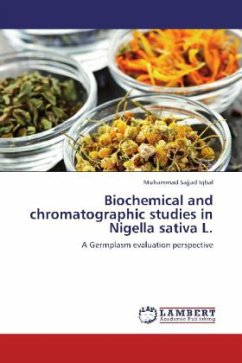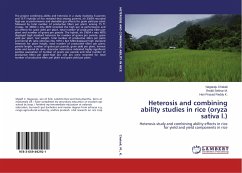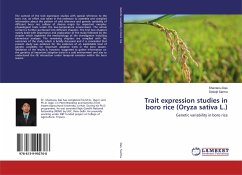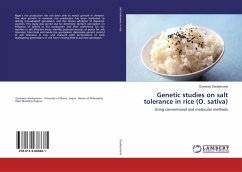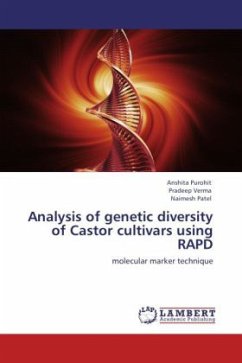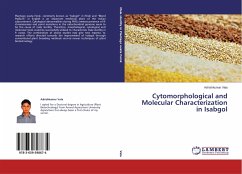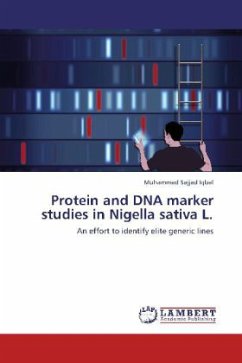
Protein and DNA marker studies in Nigella sativa L.
An effort to identify elite generic lines
Versandkostenfrei!
Versandfertig in 6-10 Tagen
32,99 €
inkl. MwSt.

PAYBACK Punkte
16 °P sammeln!
The study was based on SDS-PAGE and PCR-RAPD markers application in evaluating genetic diversity in Nigella sativa L. germplasm.SDS-PAGE revealed narrow genetic variation and eight subunits were observed from the present set of accessions. It can be high if the number of samples or population size increases. Molecular markers like PCR-RAPD technology is considered as a useful tool to detect genetic variation at the DNA level and tagging accessions for specific traits. Accession specific bands were observed for individual primers and in combination of various primers that could help in resolvin...
The study was based on SDS-PAGE and PCR-RAPD markers application in evaluating genetic diversity in Nigella sativa L. germplasm.SDS-PAGE revealed narrow genetic variation and eight subunits were observed from the present set of accessions. It can be high if the number of samples or population size increases. Molecular markers like PCR-RAPD technology is considered as a useful tool to detect genetic variation at the DNA level and tagging accessions for specific traits. Accession specific bands were observed for individual primers and in combination of various primers that could help in resolving genetic diversity and linkage with other traits. Based on 249 RAPD markers generated by 15 primers, some primers revealed characteristics fragments and the level of polymorphism (66%) varied with different accessions. Results suggested that Nigella sativa L. seed/oil deserve further consideration and investigation as a potential new multipurpose crop for industrial, cosmetic and pharmaceutical uses.



